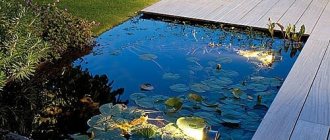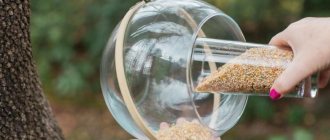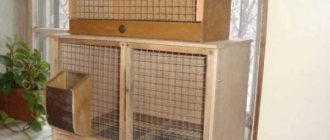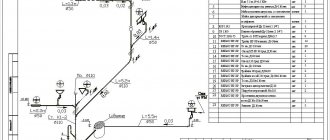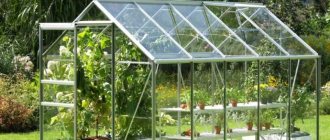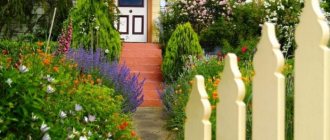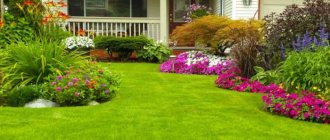Home » Landscape design » Flower beds and flower beds
Flower beds and flower beds
Vladimir 05/07/2020
69137 Views
SavingSavedRemoved 4
Do-it-yourself flowerbeds in the country
The flower garden is a small architectural wonder surrounded by emerald green grass. Flower beds include both single and group plantings, decorative elements, paths, platforms, small architectural forms in the form of sculptures, fountains, etc. Join the fascinating world of landscape design - create a flowerbed at your dacha with your own hands!
Introduction
Based on your wishes, you can create the flower garden of your dreams with your own hands.
Parterre (geometric) flower beds have a symmetrical shape and are usually located in front of the entrance to the building. Open-plan flower beds provide more room for imagination compared to ground floors. They can be designed taking into account the unevenness of the landscape, and installed in a quiet area of the garden, near the pool.
Stone bricks are an excellent solution for zoning
The background for a flower bed, as a rule, is decorative shrubs with attractive foliage colors or small beautifully flowering trees. When creating flower beds, various types of decoration are used: solitaires, rutaria, alpine slides, arches, borders, etc.
Tapeworm is a solitary growing plant that looks spectacular at any time of the year, stands out against the general background of the flowerbed, forming a bright spot. The purpose of a tapeworm is to attract attention. The life of the entire flower garden revolves around the tapeworm.
Dwarf spruce will perfectly cope with the role of tapeworm
For single plantings, use light-loving plants; they can be either annuals or perennials. Among annuals, decorative sunflower, burgundy amaranth, castor bean are good as tapeworms, among biennials - mallow, foxglove, among perennials - queen of shade astilbe, daylily, tree peony.
Master Class. DIY flowerbed “Turtle” made from car tires
We offer another interesting option for creating a beautiful garden flower bed. Step-by-step instructions are given below.
Table No. 2. Instructions for making a flowerbed “Turtle”.
| Steps, photo | Description of actions |
| Step one | The finished flowerbed of tires will look something like this. |
| Step two | To begin, prepare: - tires with spikes (2 pcs.), always one without steel cord; - screwdriver; — paint for external work, brush; — self-tapping screws 3.5x55 mm (15 pcs.); - a large knife. |
Step three | In a tire that does not have a steel cord, cut out the bead on both sides and cut it into four identical fragments. |
Step four | As a result, you should have the following elements from which the paws will be made. |
| Step five | Cut a couple of rectangular sections on each of the blanks. |
| Step six | As a result, the workpiece should look like this. |
| Step seven | The second tire, from which the body will be made, may be slightly larger. Mark it into six equal parts, make slits at the border of the sidewall and tread - one narrow (for the tail), one round (for the head) and four wide (for the paws). |
Step eight | Insert the pre-made paws into the corresponding slots, fix each with two self-tapping screws. |
| Step nine | Here is another photo, from a different angle. |
Step ten | Connect the edges of each paw as shown in the image: on one side with a self-tapping screw, and on the other with a wire staple (similar to a stapler). As a result, the paw will be narrow near the body, and voluminous on the other side. |
| Step eleven | Take a piece of tire, make a tail out of it and attach it with the same screws. |
| Step twelve | You can use a spray bottle to make the head. |
| Step thirteen | The hole for the head that you made earlier should be such that it itself is located at an angle of 45 degrees. Secure the bottle with a self-tapping screw (it should go right through, as in the image). |
Step fourteen | When assembled, the flowerbed should look like this. |
Step fifteen | Paint the flowerbed (you can use two colors, as in the example). Tread elements can be used to emphasize the texture of the turtle. If the tires are “bald”, come up with your own design. |
Step sixteen | Color your head too. The turtle, as you can see, is smiling contentedly. That's it, the flower bed is ready (just wait until the paint dries)! |
Flowerbeds of annuals - diagrams
Flowers for flower beds are selected according to color, variety and many other factors. And to make flower beds from annuals, the diagrams of which you will find in the article, yourself, you do not need to have the skills of a landscape designer. The main thing is that everything is correct
Flowerbed, like from a magazine cover
An enviable decoration for your home
First, decide how much time you can devote to flower beds. If at your dacha there is only a flower garden, and you direct all your strength and energy only to it - this is one conversation, but if there is also a vegetable garden, beds with strawberries, potatoes, tomatoes, cucumbers, a berry garden, there will be very little time left for flowers.
Vegetable bed
Sometimes novice gardeners buy an expensive flower in a single copy, plant it in their flowerbed, and then wonder why the flowerbed doesn’t look as attractive as on the covers of glossy magazines?
Dear flower growers, not all plants, even the most beautiful ones, look impressive individually. Use group plantings to create pops of color in your flower garden. This is a wonderful technique for decorating a beautiful flower garden.
Why isn't your flowerbed like the one on the magazine cover? Read below!
For group plantings, take several plants of the same species in different color shades. You can use annual, biennial and perennial crops.
Look how great the band looks in purple. It contains phlox and daylilies, the queen of the garden - the rose and such a simple but sweet field geranium.
When creating group plantings, choose plants with a long flowering period so that they do not lose their decorative effect throughout the season.
There are some plants that look very impressive before and after flowering. Seed pods and foliage remain on them, and they continue to decorate the flowerbed even after the end of their growing season.
In mixed groups there should be a selection in height, plants should not obscure each other, everything should be harmonious.
Place groups in your flowerbed in tiers . The lower tier consists of ground cover and low-growing plants; they look good near paths and alleys.
Primrose is a great option for the bottom tier of your flower bed.
If you decide to place a group near a tree trunk, then retreat 20 -30 cm. Groups can contain from three to ten plants.
Types of flower beds: irregular
At the dacha, the easiest way is to make an irregular flowerbed, which is characterized by a freer design. Flowers in it are arranged in rows or dotted, with several plants in a group. To prevent bald spots from forming in the flower garden, ornamental grasses and grains are sown between large species.
Marking
Making a flower bed is much easier if you first mark it out. Regardless of the size of the future flower garden, the breakdown will greatly facilitate further efforts to create it. For marking you will need sand, pegs and strong twine. The easiest way is to outline the boundaries of a square or rectangular flower bed. Low pegs are driven in at corner points and connected with rope.
Then a groove is dug along straight lines under the twine, and a concrete curb is installed into it.
It is not much more difficult to create a round flowerbed. You need to measure the diameter of the circle and divide the number in half (find the radius). Then a peg is driven into the center of the flower bed, a rope is tied to it (its length is equal to the radius of the circle) with a piece of reinforcement tied to the opposite end of the twine. Having pulled the rope, it is rotated around a stationary peg, while at the same time drawing a line with the end of the reinforcement until the circle closes. To prevent the line from getting worn out, it is marked with a strip of sand, after which a curb is dug in.
Advice. The border can be made from scrap materials, for example, old brick. It is laid according to the domino principle, that is, obliquely one on one.
Soil preparation
In the fall, preparation of the site for spring planting of seedlings begins. First, the type of soil is determined and, if necessary, improved. For each type of soil, different additives are used, which are evenly distributed over the surface of the future flower garden, and then it is dug deep.
Floral arrays
Unlike the group, the massif occupies a large area that can extend for tens of square kilometers. Arrays can be plain or variegated.
Suitable for single-color arrays:
- lavender
- phlox
- poppies
- tulips
Floral array of tulips of different varieties
It is not easy to create a high-quality massive planting. It should be harmonious, the colors should complement each other. For example, an array of blue pansies, which are located in the foreground, gradually turning into more saturated blue irises.
Contrasting array without further ado
Creation of contrasting arrays is allowed.
The following options are possible:
- pink phlox and white delphiniums
- delicate white daffodils and bright red peonies
- fiery swimsuit and purple cockerels
Flowerbeds are part of the flower garden
Flowerbeds can be placed in the center of the lawn, along the garden path, around a pool or fountain. They can be oval, round, diamond-shaped or polygonal. Nowadays it is customary to make flower beds flush with the lawn or even deepen them a little.
Play with small architectural forms: statues, fountains
Carpet flower beds made from ground cover plants of various colors in the form of ornaments look very beautiful. It is customary to mulch the soil between plants with sawdust and pine needles.
Roccary
This type of flower bed is rightfully considered one of the most beautiful ways to decorate a flower bed; in appearance, such a flower bed resembles an alpine hill.
Also, a flower bed can be made not only from flowers, but flower beds are also made from stones.
Border
An important element is the border surrounding the flowerbed. The border gives the flower garden completeness. You can also make a “living” border from low, brightly flowering annual plants, such as marigolds or low-growing begonias.
The border neatly outlines the flowerbed, giving it completeness
When selecting planting material, you need to proceed from the following considerations:
1 the plant must be dense and bushy
2all plants must be the same height
3maintain its attractiveness after flowering
4easy to tolerate trimming
5be resistant to temperature changes
Petunia flower border
Options for borders
Annual plants:
- lobelia
- Chernobrivtsy
- low growing carnation
- fuchsia
- cineraria
- brachycoma
Perennials:
- catchment area
- host
- day-lily
- Heuchera
Rabatka
A rabatka is a long strip of land planted with ornamental plants.
Rabatki are good for arranging garden paths and alleys
They highlight the foundation of the building well. As a rule, ridges are not wide up to 2.5 meters.
There is no need to do very long work. If you need to plant a fairly large area, then simply make gaps of half a meter between the ridges.
Plant the gaps with low-growing shrubs: boxwood, spirea.
According to the height of the plants, ridge plants are divided into two types:
1 One-sided - in this case, low plants are planted on the front side of the ridge, then taller ones and, finally, the tallest ones in the background.
2 Double-sided - in this case, tall plants are located in the center, and low plants are located at the edges.
According to the color scheme, discounts are divided into single-color and multi-color.
When creating single-color flower beds, garden plants of the same type and color range are used. In multi-color discounts, you can combine different colors at certain intervals. Multi-colored discounts are more attractive and elegant.
Wooden flower beds are what is trending now
A good solution in country house design would be wooden flower beds, and they can be either horizontal or vertical. You can also organize a flower bed in the trunk of an old dry tree, if you have one on your site. If there is no tree, but a good stump remains from it, then you can use that too.
And if you have a lot of wooden blocks left over from construction or finishing work, you can use them to make a wonderful fence for a flower garden.
Assortment of plants for an attractive garden
Annuals:
- Chernobrivtsy
- petunia
- brachycoma
A flower bed of ground cover plants along the garden path
Biennials:
- pansies
- daisies
- rose stem (mallow)
It is not easy to create work from perennial plants.
Varietal composition for perennial ridges:
- low growing aster
- tree peony
- delphinium
- day-lily
- Heuchera
- small petal
Mixborders
Combined mixborder along the fence
Mixborders are multi-row flower beds of ornamental plants . The plants are selected so that when some fade, others immediately bloom, and the mixborder remains attractive throughout the season.
A flower bed that is attractive in the off-season is the pinnacle of a florist's skill
Mixborders are often placed along buildings, on lawns, and near swimming pools in the form of bright color spots. The edges of the mixborder are limited to lawn grass or laid out with tiles, stones, and stump cuts.
Perennial cereal grasses look beautiful in mixborders
The selection of plants should be such that the flower garden will be a decoration throughout the entire summer season. For mixborders, annuals and biennials are used, but the main place, of course, belongs to perennial plants.
Use pebbles to fill empty spaces between plants
The background for a mixborder can be:
- pampas grass bush
- tree peony
- barberry
- dogwood
- small beautiful flowering tree
Combined mixborder along the fence
Tips for decorating a flower bed
It is true that experience comes with time. But I don’t want to learn from my mistakes. To make the design of your first flowerbed go more smoothly, it is better to listen to the advice of experienced flower growers.
Tips for beginners:
- It is better to make several small flower beds than one large one, since a small flower garden is easier to care for;
- In a flower garden that is too long, it is difficult to take in distant details;
- The diameter of a medium-sized round flower bed is about 2 m;
- A round flower bed looks more impressive when its central part is slightly raised;
- If the flower bed is made on a lawn, it should not be limited by a concrete or any other border. It is better to make a border of low annuals - this way it will look more natural.
- To prevent lawn grass from encroaching on the territory of the flower garden, a plastic border tape is dug along its perimeter;
- You should not save money by planting plants too densely, as they will stretch out and bloom poorly;
- Diseases develop faster in plantings that are too dense.
A few words should be said about rhizome plants. Their root system grows quickly, so every 3-4 years the flower garden is updated or reconstructed. In autumn or early spring, overgrown species are dug up, the roots are divided into sections, and updated planting material is replanted in place. To prevent the process from being too tedious and taking several days, you can separate the most overgrown species every year. It should be noted that some perennial plants, such as irises, divide from June (when the flowering period ends) until the end of summer.
Useful video on forming a simple flower bed:
Alpine slide
This is a miniature rock garden. The main task when constructing a rock garden is to ensure that it fits organically into the landscape . It is worth remembering that this style of garden art originated in ancient Japan.
The Japanese, above all, value harmony and peace
Alpine slides have gained unprecedented popularity in our time. Apparently our people lack quiet contemplation of natural beauty.
Making a good rock garden is not as easy as it seems at first glance
Planning should proceed in several stages. First of all, it is necessary to organize there is natural planning; it, as it were, stylizes the motifs of the mountain landscape.
- Choose areas with a slope or terraces.
- First, drainage is done, because mountain plants do not tolerate stagnant water.
- The top layer of soil is removed, buried 20–25 cm, crushed stone or broken brick 5–10 cm thick is laid.
- The stones should be matched in color and laid parallel to the surface of the site; stones should not be piled up chaotically.
- Use sandstone, limestone, granite, natural stones. Avoid regular shapes and right angles.
- The stones need to be installed firmly, because in the future it will be possible to move along them, weeding and loosening the rock garden.
- Fill the space between the stones with decorative pebbles or mulch with large sawdust and pine needles.
Stones are an integral part of the alpine slide
Install the stones firmly, you will have to climb on them while weeding the alpine slide
Places for installing flower beds
For vertical compositions with flowers and greenery there are no frames limiting the size or shape, so they can be placed literally anywhere in the summer cottage:
- a cascading flower bed will decorate the entrance area to the house, to the terrace, to the gazebo;
- You can decorate the fence with boxes of flowers and greenery, making the border less official;
- a flowerbed hidden in a bush, cascading or vertical, will enliven the corner during the period when the flowering of the bush ends;
- tall towers will brighten up the corners of the site;
- Hanging flowerpots, in a certain geometric or chaotic order, will look elegant not only at the entrance to the house, but also on the wall, near the bench.
Depending on the type of construction, there are:
- wall;
- wall;
- ground;
- hanging flower beds.
In a word, any boring corner can be enlivened by arranging even a low vertical of several pots or flowerpots.
Laying a rock garden
If the plants you plan to plant like acidic soil, add peat chips, and if they prefer alkaline soil types, then you need to lim the soil with lime.
It is not recommended to use manure and large amounts of nitrogen fertilizers, as the plants will begin to vegetate wildly, this will give them an unusual appearance, they will stretch out, become unstable to diseases and lower temperatures.
In addition, manure can contain a huge amount of weed seeds, and as you know, weeds are the worst enemies of flower beds.
Early flowering crocuses take pride of place on alpine hills
In the first 2 - 3 years you can not apply fertilizers at all; in subsequent years you need to add a little superphosphate.
The range of plants used for alpine slides is very wide
Cereals:
- ground cover plants
- all kinds of bells (Carpathian bellflower, Campanula angustifolia)
- Heuchera
- looked younger
- bloodroot
- saxifrage
- savory
- lavender
From early flowering plants you can plant:
- crocuses
- saffron
- decorative bow
- hazel grouse
- hyacinths
Single growing ferns will look beautiful.
Among the shrubs there are many attractive low plants that are suitable for decorating an alpine slide:
- barberry
- heather
- rhododendron
- low growing spirea
- euonymus
- boxwood
Sedum and young - a standard set for a top-end rock garden
Coniferous plants look beautiful: decorative low-growing Christmas trees, pines, yew, juniper.
Wicker fence
A decorative wicker fence, woven with your own hands, will add originality to the garden and help save money - a fence created by yourself costs absolutely nothing.
It is best to weave a fence from a vine, but you can use other flexible branches left after cutting down trees and bushes. Birch decorative barriers look very expressive. The height of the wicker fence should be approximately 0.4-0.6 meters.
The base of the fence is made from long, thick branches of willow or grapevine. First of all, pegs are placed around the perimeter - in the corners and along the walls. A frame is woven between the pegs to create a fairly dense fence. Very long branches are trimmed. Secure the walls with corner clamps.
Wicker fences for flower beds are ideal for naturalistic and rustic gardens, perfect for decorative flower beds of roses, tall plants, and ornamental grasses.
Perennials in flower beds
Take care to get the greatest effect from the least amount of labor. There is a way out - these are perennial plants. Even at the planning stage, allocate space for a flower bed.
If you expect that the flowerbed should be visible from the window of the house or from the gazebo, do not hide the flowers away from recreation areas . It is up to you to create a flowerbed of any shape - round, with right angles, in the form of diverging rays.
Perennial plants are a good choice for mixborders
Perennials look very beautiful as part of mixborders - these are prefabricated flower beds. They are usually organized along garden paths or along fences.
Perennial flowers are demanding of sunlight, under the canopy of trees, in the twilight they turn yellow, stretch out, and lose their beauty
Mixborders can be placed next to perennial fruit trees and berry bushes.
When laying a mixborder, keep in mind that its width must be at least two meters, otherwise the attractiveness will be reduced.
Designing a site for ornamental plants
Every owner wants to make their summer cottage beautiful or tastefully decorate the yard of their home. It’s enough to look around to understand how to make a flowerbed with your own hands.
To do this, you don’t need to be a designer and incur large expenses. The easiest way is to arrange a flower garden in a geometric shape. Such an area is easy to fence off.
In fact, a beautiful flower bed can be created from any abandoned material. Old utensils, dry cut branches, unnecessary tires from a car and various items that have already served their intended purpose are used. When planning, keep in mind that long flower beds are placed along the fence or paths in the garden area.
Soil preparation
It is advisable to prepare the soil 3 to 5 weeks before planting flowers in the flower bed
- Provide good drainage. Standing water negatively affects the physiology of flowering plants.
- Perennial plants can go into a state of suspended animation due to waterlogging.
- There must be air in the soil, the soil must be moisture-absorbing and fertilized.
- If there are a large number of weeds, you need to remove them, dig up the ground, and get rid of the roots of perennial grasses, especially the rhizomes of creeping wheatgrass.
- Organize drainage, lay it to a depth of a couple of bayonets of a shovel.
- Compost, humus, and peat chips have a beneficial effect on the quality of the soil.
- If your site has clay soil, you need to add sand and half-rotten sawdust.
We create a rock garden on a summer cottage
We have already mentioned today one of the new designs of flower beds in the country. The presented model is a hybrid of a rocky garden with coniferous crops. We present step-by-step instructions for gardeners:
- We are selecting an area for our future flower garden. We clear it of weeds and debris, possible metal objects and splinters.
- We lay a sheet of textile on the ground, which will further prevent the growth of weeds.
- We lay large boulders on top of the textile in a chaotic manner.
- Between them we place pebbles and smaller stones.
- All free space is filled with gravel or crushed stone at your discretion.
- Finally, plants are planted in small areas of soil. Most often, these are coniferous crops, decorative onions, and sedums.
- The plants in this flower garden model play a decorative, auxiliary role, so abundant planting of flower crops is not provided.
Flower garden care is carried out as usual.
Planting flowers in a flower bed
The best time for planting flowers is spring, and for bulbous and early-flowering perennials, autumn
1Irises should be replanted after they have flowered, this is the most favorable time, they are at rest, and after a month and a half they begin to grow a new root system.
2When planting perennial plants, remember that the planting holes should be such that the plants can easily spread their roots into them.
3The depth should not be excessively large; the best option is when the lump is completely located in the new hole.
4Freshly dug soil around the planted plant should be compacted, eliminating voids in the area where the root system is located.
5It happens that after the first watering the soil sags; in this case, add fresh soil.
6Leave a small depression to make it convenient to water the plant.
Advantages and disadvantages
Advantages of vertical flower designs:
- Easy to care for plants . Absence of weeds and small pests, so there is no need for digging;
- Take up little space . This is especially true for growing in a small area of land, a garden, or even in an apartment building;
- Ease of construction of structures . Freedom of creativity and imagination - when you can build foundations for flower beds with your own hands;
- Versatility and mobility of flower beds . Want to move it to another corner of the garden? Almost all vertical flower beds are lightweight, they can be supplemented, modules can be moved;
- External attractiveness . Vertically planted flowers highlight a summer cottage and become its unique decor.
An excellent combination of palette in choosing planting annuals.
There are also disadvantages, these include:
- Unsuitable for winter . If perennial plants are grown, then the soil freezes in the cold season, the beds will have to be covered in a greenhouse or in a heated room;
- Small volume of soil . For a vertical flower garden and a garden flower bed, flowerpots of a certain size are required. Limiting containers is not suitable for all types of green crops, but those already planted will require additional feeding;
- Lack of moisture . A cascading flower bed needs frequent watering, because the soil in vertical containers dries out much faster than in a vegetable garden.
Flower pots attached to the fence wall decorate the garden.
To correct deficiencies, they will help you:
- Hydrogel . An artificial material based on polyacrylamide that accumulates moisture in the soil. As a result, ideal living conditions for plants are created;
- Automated drip irrigation system . You can buy it at a specialty store or make it yourself. In this case, you will need a pipe whose diameter will not exceed 3 cm; small holes are drilled in it, using a third of the entire pipe. The diameter of the holes is approximately 5 mm.
Variety of flowers in flowerpots in the courtyard
Watering
The best time to water is early morning
In summer, perennial flowers need to be watered often and in large quantities. If they lack moisture, they will bloom poorly and will not have the desired aesthetic effect.
Do not water the plants on the leaves, pour water directly under the roots, this way you will avoid the spread of powdery mildew.
Do not forget to remove faded branches, inflorescences, and leaves that have lost their attractiveness. Try to keep your flowerbed decorative for as long as possible.
Photos of vertical flower beds
Photos of vertical flower beds should not only be admired, they should serve as a source of inspiration for creating your own masterpieces in your summer cottage.
Layout
Perennials are grouped by growth, flowering time, color, and type of leaves. Choose plants that are not particularly labor-intensive to care for.
Moderately labor-intensive perennials include:
- astilbe
- aster
- geranium
- primrose
- brachycoma
- cloves
- sedum
Foxglove requires virtually no care
Among the unpretentious ones the most popular are:
- monarda
- stock-rose
- digitalis
- lily of the valley
- digitalis
- lavender
- phlox
- lovage
What can a flowerbed fencing be made from?
Raised flower beds occupy a special place in landscape design: they are not trampled by children and pets, and caring for them does not require bending your back. For such flower beds, craftsmen have come up with dozens of options for beautiful fencing made from different materials:
- wood in all forms: boards, beams, logs, picket fences, bamboo, even slabs and sleepers;
- forged metal, ondulin and corrugated sheeting;
- construction and decorative bricks;
- stone: limestone, slate, sandstone;
- glass and PET bottles;
- plastic.
Stylish fencing is made from large shells, old plates of different sizes, and gramophone records. An interesting idea is to place a flower bed on the top plane of the gabion.
Formation of compositions
When arranging flower beds, assume that the main colors are red, blue and yellow.
Flower beds with plants of the same color, but in different shades, look beautiful
Green, purple, and blue flowers look beautiful in the foreground. Cool shades are perceived better up close, because the further they are located, the less impression they will make and will merge with the surrounding landscape.
Also, when creating flower beds, use white color, plants with silver foliage, they look very impressive and, as it were, soften the impression of contrasting neighbors. When creating flower beds, the emotional side is very important, how the plant is perceived by us, people.
The aesthetic side is one of the most important in creating flower beds
Look at the peonies, how luxurious they are, large, majestic, covered in drops of dew, almost the size of a saucer, heavy with the abundance of petals. Forget-me-nots and viola will look beautiful next to peonies.
It is necessary to plant these crops in the most accessible places in your garden; peonies have few competitors that would look so decorative. Projects of two-story houses Z500 https://z500.com.ua/doma/poisk/dvuhetazhnye-doma.html on the official website https://z500.com.ua
Peony bushes need space and green lawns
In early spring, the burgundy sprouts of these flowers look attractive and elegant. After flowering, the bush keeps its shape for a long time and even in autumn pleases with its yellow, red and brown colors, standing out against the background of the lawn and shrubs.
Add dynamics to your garden - use vehicles
If you have an old bicycle at your dacha that no one uses anymore, it can also become an excellent basis for a future original flower bed. The same applies to an unwanted antique car - flowers can be planted in the interior, in the trunk and on the hood. And if you use climbing plants, they will cover the entire car. And the old car, which just yesterday occupied space in the yard, will become the main attraction of your garden.
And for those who have neither the time nor the desire to tinker with a flowerbed, but have plenty of creativity, you can design the flowerbed like this:
If you have a burning desire to decorate your dacha with a flowerbed and, most importantly, have unnecessary things, then your dacha has a great chance of becoming the owner of the most original flowerbed in the area! The main thing is not to be lazy and to fantasize more.
Do you have any ideas for creating flower beds from improvised materials and unnecessary things? Share in the comments!
Primroses
One of the first flowers after the snow melts
- Bulbous flowers evoke tender and tremulous feelings; these are the first flowers after winter that we have been waiting for for so long.
- They look touching against the backdrop of the remnants of snow; they should be placed closer to paths and garden paths so that you can admire them.
- Make sure your garden looks decorative from early spring to late autumn. Yes, it's difficult, but possible.
- Take into account all the features, remember that early flowering plants are usually short, so they will need a good background to highlight their beauty.
- Use boxwood bushes, low-growing thuja or juniper as a background.
Plastic bottles - a flight of fancy
Plastic bottles left over after feasts can also be useful to flower bed decorators. Inserted like glass bottles, carefully painted in different colors, they will illuminate the green space with bright notes.
However, it is worth remembering that plastic is subject to deformation when the temperature changes, so before directly inserting the bottles into the ground, you should carefully fill them with sand. Possible deformation under the influence of weather conditions is a disadvantage of these fences.
Beautiful and well-groomed flower garden with a fence made of plastic bottles
The garden plot on which the flower beds are located always attracts attention with its beauty and unique aroma.
climbing plants
In flower beds, climbing plants are located on supports, usually in the center
- Lianas and climbing plants are always welcome guests in the garden. They are distinguished by rapid growth of shoots, carved foliage, numerous flowers, and sometimes attractive fruits.
- To achieve maximum beauty, you need to use supports and create an appropriate background.
- Use combinations of contrasting colors, for example, clematis can be planted in dark purple and white.
- The supports should be comfortable and easy to use.
- Climbing plants can decorate lamp posts and unsightly buildings.
Planting a flower bed - step-by-step instructions
- First of all, you need to draw up a project, make a breakdown, plant plantings. And of course, provide constant care.
- You can make a planting drawing yourself on a piece of paper, or you can use computer programs for landscape design.
- Here is a list of some computer programs for creating flower garden designs.
- After creating a flower garden, you need to write a statement that will contain information about the varieties, hybrids, plants planted, the quantity, and frequency of planting.
- Before planting, it’s a good idea to familiarize yourself with the biology and agricultural techniques for growing certain crops.
- Place flowers taking into account their size, so that they do not block the plants behind them. Consider flowering time.
- If you follow all these rules, the flower garden will look beautiful and attractive from early spring to late autumn.
- Next to bulbous plants that will flower early, tall perennial plants can be provided so that they cover bald spots.
- Once you have finished laying out all the elements in your flower bed, till the soil.
- Don't go beyond the boundaries you set.
- Remove the roots of weeds, especially the rhizomes of creeping wheatgrass, stones, and other debris.
- In case of severe soil contamination, imported soil must be brought in. Remove the top 25 cm layer of soil, fill the vacant space with a specially prepared soil mixture of humus and rotted leaves.
- You can start planting cold-resistant plants in early spring; do not be afraid of frost.
- Start planting heat-loving plants in late May.
- To prevent you from trampling the ground, use boards and stands.
- Planting should be done starting from the center of the flowerbed and gradually moving towards the edges.
- Do not forget that the flower garden must be constantly cared for, only in this case it will look aesthetically pleasing.
- Ensure timely weeding and loosening.
- Faded inflorescences and dry leaves must be removed.
Provide timely watering, and the plants will thank you with lush flowering
- If the summer is especially dry, watering should be done in the morning and evening; watering should not be done during this time.
- Feed the plants with fertilizers three times: in early spring, during bud formation, and during flowering.
- Apply ammonium nitrate, phosphate and potassium fertilizers.
Creative ideas for creating a flower garden
By placing a large pot with a soil mixture inside on its side, they create a flower stream by planting plants starting directly from the neck. A curved line looks especially impressive.
If there is a small pond on the site, fix miniature pots with flowering plants on foam plastic and lower them into the water. Such floating flower beds add a romantic touch to the surrounding atmosphere.
Floating flower bed
An original flower pole is created from a chain-link mesh rolled into a cylinder shape. They fasten it with wire, cover the internal space with agrofibre and fill it with soil. Ampelous varieties of flowers are planted in the cuts cut on the side walls.
A flowerbed made by yourself will become the pride and decoration of your site
The activity of creating flower beds yourself becomes exciting and fruitful if you approach it creatively and systematically. Introducing your own ideas into ready-made solutions makes any version of flower beds unique and original.
Author of the article: Lastovskaya Lyudmila Viktorovna
Tags: flower beds
- Related Posts
- Flower seedlings that need to be prepared in April - timing, growing features
- Beautiful and unpretentious flowers for the cottage and garden, blooming all summer (photo)
- Growing and caring for oleander at home (photo)
« Previous entry

